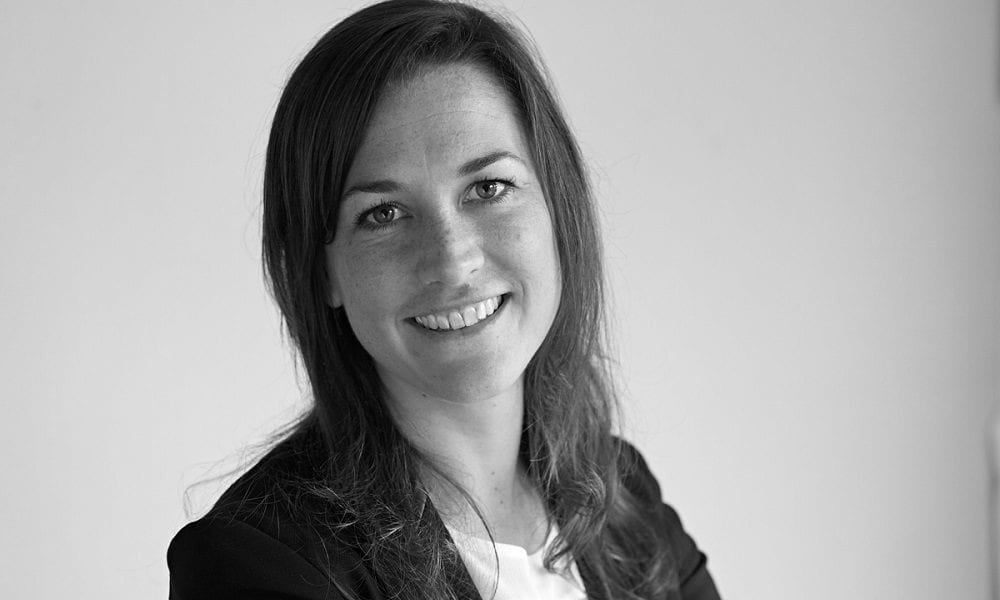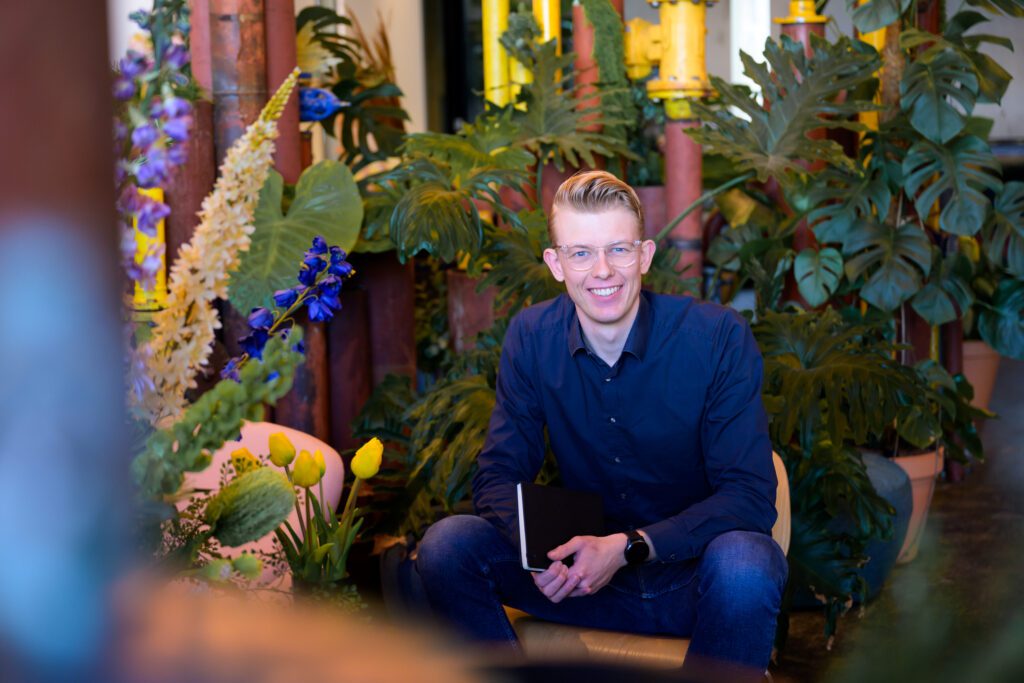Climate change affects the way we live. We need to respond to this now in our area development. Nanet Schaap, project developer at AM, explains why climate-adaptive and nature-inclusive development is so urgent, what AM is doing in this area and where interesting opportunities lie ahead.
Climate adaptive development as second nature

Nanet Schaap works on climate-adaptive and nature-inclusive project development. Climate adaptive development is the development of areas where you take the impact of climate change into account. Nanet explains, “This involves dealing with issues such as heat stress, drought, soil subsidence, water flooding from rain, flooding from rivers and the loss of biodiversity.” She explains why nature-inclusive development is so closely related to this: “Just think about the hotter summers. Your home and garden can then get so hot that it becomes uncomfortable. With plants and trees you achieve a considerable cooling effect. On a hot summer day when the temperature is 31 degrees, it can be 55 degrees in the sun on a paved surface, but on a green surface in the shade of a tree it is only 25 degrees. In addition, that same tree provides shelter for birds, fruits for insects and it has been proven that people are happier and healthier when they look out on greenery from their homes.”
That climate change also affects our homes has not yet dawned on all people
Impact on our homes
In society, there is growing awareness of the urgency of climate-adaptive development. Nanet: “Everyone now knows that we have to deal with climate change. But that it also affects our homes has not yet dawned on all people. This awareness is growing only slowly.” Although droughts and floods are a new reality in many countries, the Netherlands as a delta country has additional challenges. Nanet: “As a delta country, we have to deal more with flood risk. Moreover, in the west of the Netherlands we are the most densely populated and at the same time the most vulnerable because this is the lowest part of our country. We also have to deal more than other countries with subsidence due to our clay and peat soils. These soils are subsiding, partly due to drought, which means we have to raise the ground tremendously for projects.” According to Nanet, we need to anticipate and here lies a task for developers. As developers, we can determine where we develop and how we build. We now develop a lot in the west, because that is traditionally where our economic center is. Perhaps a somewhat radical thought, but possibly one day it will become wise to develop more in the east of our country as well.”
AM is ahead of the troops
According to Nanet, it is important to fully commit to climate adaptation now, because most area developments take about 10 years. For AM, the topic of climate-adaptive construction has been high on the agenda for years. “With the climate-adaptive measures in our Wickevoort project, we were way ahead of the troops. When we started that project in 2014, climate-adaptive development was barely talked about.” At Wickevoort, on the outskirts of Cruquius, near Haarlem, AM has taken several climate-adaptive measures. Nanet: “For example, the gardens of the houses are not separated by fences, but by hedges. Also, residents are not allowed to pave more than 50% of their garden, the rest must remain green. All new trees planted must be fruit-bearing, to promote biodiversity. The parking lots are not paved, but semi-paved, reducing heat and allowing water to be absorbed directly into the soil. Furthermore, there is a lot of nature and greenery to be found at Wickevoort and there are nesting places for small mammals, birds and insects.” Meanwhile, greening is an important goal for AM in all projects. Nanet: “It ties in with our ambitions. Nature-inclusive and climate-adaptive development plays a big role in two of our three impact themes: ‘Move to climate positivity’ and ‘Design for wellbeing’. We are aware that climate-adaptive and nature-inclusive development brings double benefits. It contributes to our ambition to be climate positive in 2035 and it ensures happy and healthy residents.
AM shares knowledge in KAN Platform
AM is a member of KAN, which stands for Climate Adaptive Building with Nature. The platform is an initiative of Bouwend Nederland, NEPROM, WoningBouwersNL, the Ministry of the Interior and Kingdom Relations and RVO/DuurzaamDoor. KAN connects developers, universities, construction companies and municipalities and facilitates joint knowledge development by sharing experiences. Nanet: “AM is developing climate adaptive from ambition and social urgency, but we also see that the government is developing more and more regulations and standards. It is nice to keep short lines of communication with each other through KAN. This keeps us all well informed of what is going on and what policy is coming.” Nanet is a member of the steering committee within KAN. This group steers the substantive agenda of the platform. Nanet: “The affiliated parties share knowledge and experience. When we find that we are faced with similar questions, KAN has the opportunity to commission research, contact ministries, organize lectures or set up working groups.” Collaborating with all stakeholders in this way is essential to moving forward, Nanet explains: “Meanwhile, there are so many measures and so many policies in development that we cannot do it alone. To really make an impact, we have to work together as an industry.”

Utilizing gardens
Where Nanet believes there is still a world to be won when it comes to climate-adaptive and nature-inclusive development is in the gardens of the residents. This may seem outside the developer's sphere of influence, but it is precisely by thinking 'out of the box' that a lot can be achieved, according to Nanet. “The gardens cover a large area of an area development, a lot can still be greened there. Of course, the residents ultimately determine how they decorate their gardens, but we can already create the right conditions in the development and sales process to create a green garden. For example, by choosing smaller private gardens during the design process in exchange for a number of larger collective gardens. This gives more room for the creation of high-quality greenery, such as large trees. We have done this in the Hilko project in Zaandam, for example. Or, for example, by stipulating by contract that residents may only pave 50% of the garden. Workshops by ecologists and landscape architects can also inspire and inform people during the sales process about the usefulness and necessity of a green garden. With a number of colleagues within AM, BAM Wonen and Homestudios, we are now joining forces to make greening gardens a standard part of our development and sales process.”
Love for nature
Nanet is driven to keep taking climate-adaptive and nature-inclusive building a step further within AM. That personal drive originated when she was young. “As a child, I played outside a lot and we went on hiking vacations in the mountains. I loved birds and nature even then.” She graduated as an architect with a specialization in landscape architecture and biodiversity, focusing on the merging of the built environment and nature. “In 2011, when I graduated, biodiversity was not yet high on the agenda at organizations and hardly anyone had heard of the term. I then started working in management positions first.” When Nanet discovered how AM is committed to many societal issues, she decided to make the switch to AM. Here she works on projects with a particular focus on sustainability, climate adaptation and nature inclusiveness. Even in her own home, she experiences how happy you can become as a human being from nature. “We recently moved to a home with a larger and especially green garden. It is remarkable how many birds and insects are here and it is wonderful to see that our children like nothing better than to scavenge endlessly in the garden all day.”



